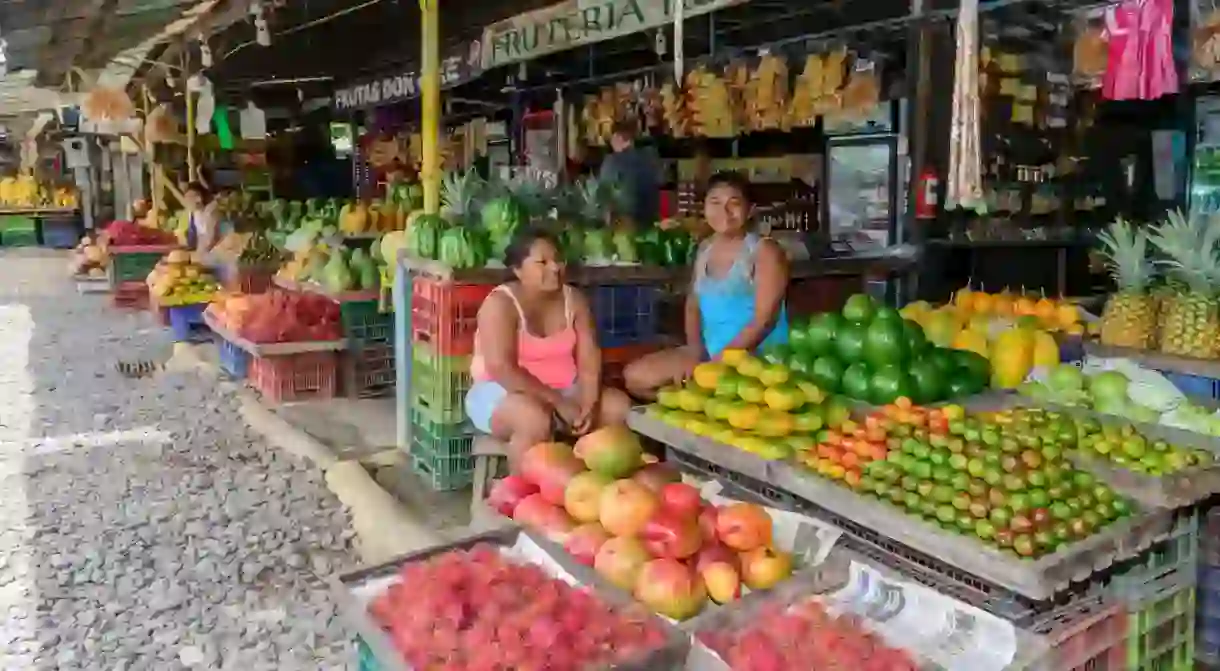How to Eat and Drink Like a Local in Costa Rica

One of the best ways to experience a culture, especially on a culinary level, is to approach it like a local – nowhere is this more true than in Costa Rica, where delicious dishes and tasty delights are an essential part of any trip. Here’s our short and sweet guide to show you the ropes.
You can uncover the secrets of traditional Costa Rican cuisine with a cooking workshop as part of Culture Trip’s specially curated nine-day Costa Rica adventure.

The basics
There are several staples that are a part of most meals in Costa Rica, but the two that most often appear on every plate of the day are rice and beans. Corn tortillas and salsa Lizano also make an appearance at most meals.
The three main meals of the day are well balanced and often made from scratch with great care and love. It’s not uncommon for everyone to come home for lunch, including schoolchildren – family is very important in Costa Rican culture.

The meals
Breakfast
A typical Costa Rican breakfast is a plate of gallo pinto (rice and beans), eggs, home-made corn tortillas or fresh bread from the bakery, sweet plantains and natilla (sour cream) or local cheese, such as queso turrialba.

Lunch
A typical Costa Rican lunch is a casado – a plate of rice, beans, a protein (chicken, pork, beef or fish), salad (usually something with cabbage) and sweet plantains. It can also include tortillas, yucca, avocado, pico de gallo and fresh or fried cheese. Other typical lunch options are arroz con pollo (rice with chicken, or shrimp, mixed seafood, pork or mixed vegetables), ceviche, sopa negra (black bean soup), sopa de mariscos (seafood soup) or olla de carne (beef stew), just to name a few.

Dinner
At dinner in Costa Rica, you’ll find the same dishes served at lunch. However, during special occasions, celebrations or family gatherings, a big barbecue or pig roast might take the place of the typical dinner spread. An invitation to one of these social gatherings is a real treat.

How to eat like a Costa Rican
Eating out
If you’re not preparing or eating a home-cooked meal, the next best option is eating at a soda (a traditional – and budget-friendly – Costa Rican restaurant). Most towns will have several sodas, and each one will be slightly different. Some sodas have a menu, while others have a more point-and-choose, buffet-style setup. Here, you’ll get a taste of authentic Costa Rican food. Try the chilera (pickled vegetables that will likely be in a jar on your table).
The local cantinas are where you’ll find some of the best local favorites, such as chifrijo (a bowl of rice and beans topped with various ingredients), patacones (fried plantains) and chicharrones (deep-fried pork rinds). Costa Rican “bar food” is so tasty and pairs perfectly with a local brew (Pilsen or Imperial) or some guaro (sugarcane-based liquor).
Dining at a soda or a cantina also provides a true sense of Costa Rican culture. It’s easy to stay in your comfort zone and eat at a place that attracts other tourists, but if you really want to dine like a local, these are two excellent options.

Snacks
Costa Ricans also grab quick eats or snacks from street vendors and bakeries. Street vendors often sell home-made empanadas (a baked or fried turnover), to-go cups of ceviche, pastries and sometimes even whole casados or rice dishes. The bakery is also a great place to grab some empanadas, pastries or bread. Between lunch and dinner, most Costa Ricans take a coffee break, which usually includes a snack, such as a sweet or savory pastry.

Shopping
Shopping at a farmer’s market (most towns have one at least once a week) is a very local way to buy produce. It’s also at a farmer’s market where you can enjoy some of the exotic fruits and vegetables found in Costa Rica.

How to drink like a local
Fresh juices
Jugos frescos or jugos de naturales frescos (natural fruit juices) are popular daytime and mealtime drinks. Home-made juices using native fruits, such as tamarindo, passion fruit, mango, pineapple, strawberry, lime and orange, are very refreshing. You’ll have several options when you dine at a soda and can even pick up a to-go juice from a street vendor. Juices are sometimes sold in a plastic bag, tied off with a knot, with a straw sticking out.

Alcoholic drinks
For your sunset and night-time indulgences, drinking like a local is quite easy. The most cost-effective and local way to drink is to try alcohol produced in Costa Rica rather than imported beer and spirits. Beer options include Imperial, Pilsen, Bavaria and a pretty impressive selection of craft brews. Of course, there’s also guaro – the national liquor of Costa Rica. There are also a few signature drinks you should try when taking the local drinking route.
One signature drink, or rather shot, is the chiliguaro – it tastes similar to a light bloody mary. A basic chiliguaro is made with guaro, tomato juice, Tabasco and lime. However, everyone has their own take on this shot recipe.
The miguelito is a delicious and dangerous shot – it tastes like a strong piña colada. A basic miguelito is made with guaro, coconut milk and evaporated milk. It’s a shot that will make you smile, and like the chiliguaro, everyone puts a unique spin on it.
Meanwhile, a guaro sour is a traditional cocktail made with guaro, lime, club soda and a little raw sugar. It’s arguably one of the best and most refreshing ways to enjoy the national liquor of Costa Rica.














